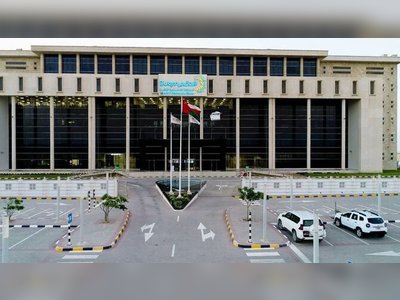
The Iconic Arabian Spiny-Tailed Lizard: A Keystone Species in Saudi Arabia's Ecosystem
A comprehensive look at the ecological importance and cultural significance of the dhub, also known as the Arabian spiny-tailed lizard.
Among the most iconic reptiles in Saudi Arabia is the Arabian spiny-tailed lizard, locally known as 'dhub.' This species plays a crucial role not only due to its size and behavior but for its importance in sustaining the desert ecosystem.
Scientifically classified within the Agamidae family, Uromastyx aegyptius microlepis is characterized by its robustness, diurnal activity, and exceptional ability to endure extreme temperatures and prolonged dry spells.
The dhub’s length can reach up to 85cm, with coloring that helps it blend seamlessly into arid landscapes.
The dhub's ecological significance lies in its dual role as a consumer of desert plants such as ramth, akrash, Al-'alanda, and sa'dan, and as prey for desert predators like birds of prey and young carnivores.
It is essential in the balance of the food web due to its selective grazing habits that encourage vegetation regrowth and contribute to soil stabilization and ground cover restoration.
This behavior also helps combat desertification, a major environmental challenge facing the Arabian Peninsula.
The dhub's burrows, up to two meters deep, serve as shelters but are also microhabitats for other desert species.
It shares symbiotic relationships with scorpions by providing them shelter while protecting itself from potential intruders.
Additionally, it demonstrates remarkable thermoregulation by entering a state of hibernation during cooler months and basking in the sun when temperatures rise.
Historically, the dhub has been an important part of local diets, especially during spring.
However, its high cholesterol levels render it unsuitable for those with cardiovascular risks.
Overhunting led to population declines but stricter enforcement of environmental laws, including fines for hunting violations, have stabilized and increased dhub populations in protected areas.
Saudi Arabia collaborates with international conservation organizations like the International Union for Conservation of Nature to ensure long-term sustainability through species assessments, wildlife trade monitoring, and habitat protection.
The dhub symbolizes resilience and ingenuity in Arab folklore and poetry, underscoring its cultural significance as a living partner in preserving desert ecosystems.
Protecting the Arabian spiny-tailed lizard is vital not just for its survival but to maintain ecological balance.
Its role reflects Saudi Arabia's biodiversity and serves as a testament to the country’s rich natural heritage.
Scientifically classified within the Agamidae family, Uromastyx aegyptius microlepis is characterized by its robustness, diurnal activity, and exceptional ability to endure extreme temperatures and prolonged dry spells.
The dhub’s length can reach up to 85cm, with coloring that helps it blend seamlessly into arid landscapes.
The dhub's ecological significance lies in its dual role as a consumer of desert plants such as ramth, akrash, Al-'alanda, and sa'dan, and as prey for desert predators like birds of prey and young carnivores.
It is essential in the balance of the food web due to its selective grazing habits that encourage vegetation regrowth and contribute to soil stabilization and ground cover restoration.
This behavior also helps combat desertification, a major environmental challenge facing the Arabian Peninsula.
The dhub's burrows, up to two meters deep, serve as shelters but are also microhabitats for other desert species.
It shares symbiotic relationships with scorpions by providing them shelter while protecting itself from potential intruders.
Additionally, it demonstrates remarkable thermoregulation by entering a state of hibernation during cooler months and basking in the sun when temperatures rise.
Historically, the dhub has been an important part of local diets, especially during spring.
However, its high cholesterol levels render it unsuitable for those with cardiovascular risks.
Overhunting led to population declines but stricter enforcement of environmental laws, including fines for hunting violations, have stabilized and increased dhub populations in protected areas.
Saudi Arabia collaborates with international conservation organizations like the International Union for Conservation of Nature to ensure long-term sustainability through species assessments, wildlife trade monitoring, and habitat protection.
The dhub symbolizes resilience and ingenuity in Arab folklore and poetry, underscoring its cultural significance as a living partner in preserving desert ecosystems.
Protecting the Arabian spiny-tailed lizard is vital not just for its survival but to maintain ecological balance.
Its role reflects Saudi Arabia's biodiversity and serves as a testament to the country’s rich natural heritage.










